Month: October 2012
November 9, 2012 — December 22, 2012
After last year’s successful exhibition of affordable photography, the gallery is pleased to present a show of vintage photographs in time for Christmas.
Photography is about collecting. Sometimes the gallery may seem like a museum space, but nevertheless the works on the wall are for sale. This gives visitors the opportunity to participate in the great adventure that is collecting photography. Now more than ever before we have the possibility of finding great works of art at affordable prices. We should remember that the last time such an opportunity arose was in the 1960s, and subsequently the market for 19th Century photography flourished. This time it is the shift to digital photography that brings 20th Century prints to light out of various archives.
It takes foresight to recognise a great work of art as a piece of history when the price tag is only a few hundred pounds. But here in East London the gallery encourages people of every generation to have a look at these one-of-a-kind pieces and develop or begin their own collections.
November 15, 2012 — November 18, 2012
In addition to a collection of aerial photographs from the great conflicts of the mid-twentieth century, we will show recent work by artist David Bailey. Having already been surprised by the discovery of a number of 1974 Polaroids taken by Bailey of Papua New Guinea and Planet of the Apes, it was uncanny to learn that for the past year and a half he has been photographing televised footage from the Second World War. Daniel only found out when he showed Bailey the invitation for the gallery’s Paris Photo exhibition, “Airborne”. Thus for the first time we will present to the public Bailey’s most recent photographic adventure in the form of large scale photographs shot with a digital camera.
When Bailey takes photos of what he sees on film he increases the number of transitions between event and image to a level of abstraction that no longer has much to do with what actually took place. The image is morphed into something else, losing its historic context and becoming entirely Bailey’s.
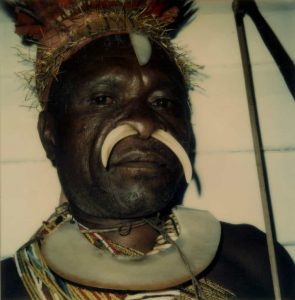
November 15, 2012 — November 18, 2012
“Photography not only helps us to see, but it inverses our preconceptions about sight.”
Sydney Picasso
For Paris Photo 2012, Daniel Blau Ltd. presents “Airborne”, a collection of aerial photographs from the great conflicts of the mid-twentieth century. The exhibition focuses on the Pacific front of the Second World War, but also on other conflicts in which the use of airplanes determined and shaped the nature of warfare. A number of pictures taken on NASA missions from 1966-1971 provide a welcome juxtaposition to the raw violence of war.
The photographs in the “Airborne” exhibition have a dual nature: the documentary and the aesthetic. As Sydney Picasso explains, aerial photographs (of war) can be seen as historical documents but also as artistic planes where the world is flattened and transformed into an aesthetic experience. Our vision of the world has been altered by photography, and even more so by airborne photography, ever since Nadar started taking pictures from a hot air balloon in the 1850s.
This collection of photographs is unique in that it shows us various aspects and landscapes of war, from semi abstract landscapes, bombs falling into clouds, elegant patterns carved into the ocean’s surface by escaping ships, to “beautiful” atomic clouds rising into the sky and the pristine choreography of jets from above.
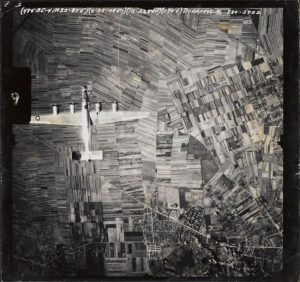
November 9, 2012 — December 1, 2012
“To see oursels as ithers see us!” Robert Burns, 1786
Daniel Blau Ltd. and Galerie Meyer are pleased to present ALLER-RETOUR, an exhibition of pictures from the Apollo X1 journey to the Moon. These works are arguably the ultimate reflection on the theme “The Journey”, the subject of Photo Saint-Germain-des-Prés 2012. This journey’s departure, destination and return extend beyond space and time into the realm of the unknown.
Space exploration has once again captivated the public with the recent landing of Mars rover “Curiosity”, which has produced unparalleled views of the “Red Planet”. Moreover, the recent passing of Neil Armstrong on August 25, 2012 is a poignant reminder of the monumentality and timeless intrigue of space in relation to mankind. Armstrong, reflecting on his journey to the Moon revealed: “the unknowns were rampant”. Set within the backdrop of the Cold War, with intense political tension between the United States and the USSR, the lunar module dubbed “The Eagle” landed Armstrong and Aldrin – with only thirty seconds of fuel remaining – on the Moon in July of 1969. An estimated 550 million people witnessed this undeniably historic event, as Armstrong and Buzz Aldrin explored the Moon’s surface for the very first time. Photographed over two hours while documenting and sampling the Moon, these original photographs remain the most expensive pictures ever taken in terms of their cost of production.
The “magnificent desolation”, as Aldrin described the surface of the Moon, had been photographed via telescope by Lewis Morris Rutherford in the 19th century. However, these 1969 photographs of an unprecedented clarity, the result of unfiltered sunlight in situ, epitomize the magnificence of space. The glorious nostalgia of this fortunate era is reflected in these incredible photographs.
50 years after the first man orbited Earth, the splendour and sublime quality of these groundbreaking pictures of the Moon continue to evoke wonder.
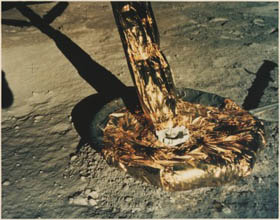
October 29, 2012 – November 23, 2012
A photo is part of reality, or at least a tiny part of it. This reality is always in the past, where it has become elusive for us. The amazing thing about photographs is that they show us something in which we place our faith – we trust the image.
When it comes to photos of war atrocities, death and destruction, the case is even more interesting, as there’s a moral in addition to an artistic aspect. Over the years I have amassed a collection of photos that contain both a particularly high degree of artistic value and a moral message. They were also all printed at the time of being taken, and are thus vintage and display zeitgeist.
For me it is interesting to interpret the past on the basis of the photographs in this exhibition; to align what I see with my own experience or what I’ve previously learned. I get to see something to which I otherwise would not have access. For example, I can still enter the ruined Reichstag in Berlin. These visual experiences imprint themselves immediately and strongly on the viewer. Slowly the artistic quality of these recordings becomes known.
Just to give an example: it must be a great artist who so immortalised the landing of Allied forces as Capa did in his eleven photos. At first glance and without the context they look inconspicuous. However, as we know that they were taken on the 6th of June, 1944 in Normandy they are considered poignant pictures, an intrinsic part of our memory.
Opening/Eröffnung: 26 October, 2012 6-9pm, 27 / 28, 11–6pm
Exhibition/Ausstellung: 29 October – 23 November





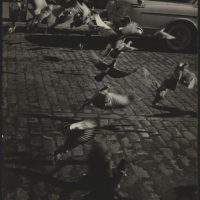
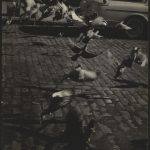




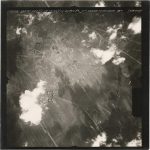
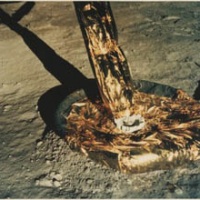
 +49 89 29 73 42
+49 89 29 73 42